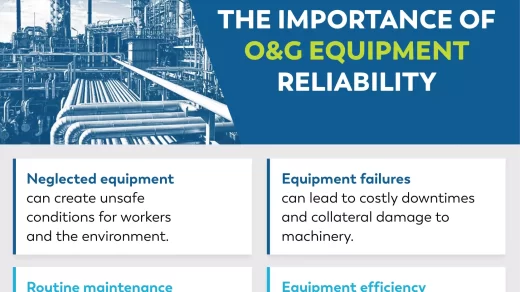In the fast-paced world of global trade, efficiency and connectivity are paramount for successful import and export logistics. The seamless movement of goods and services across borders relies on a well-coordinated network of transportation, communication, and regulatory processes.
This article explores the intricacies of navigating import and export logistics, delving into the key factors contributing to international trade efficiency and connectivity.
The role of technology in modern logistics
Technological advancements have revolutionized the import and export logistics landscape in recent years. Automation and digitization have streamlined various aspects of the supply chain, enhancing efficiency and reducing operational costs. One of the key technologies driving this transformation is the Internet of Things (IoT), which enables real-time tracking and monitoring of shipments.
IoT devices, such as sensors and GPS trackers, are integrated into containers and vehicles, providing logistics companies with valuable data on location, temperature, and humidity, ensuring goods’ safe and timely delivery.
Cloud-based platforms and data analytics are crucial in optimizing supply chain management. These tools enable logistics providers to analyze vast amounts of data, identify patterns, and forecast demand more accurately. With access to such insights, businesses can make informed decisions, such as optimizing inventory levels, route planning, and resource allocation, ultimately leading to more efficient and cost-effective import and export operations.
Connectivity and collaboration: The power of partnerships
In the world of import/export logistics, collaboration is vital. Establishing strong partnerships with various stakeholders, including suppliers, shipping lines, customs authorities, and warehousing facilities, is essential for creating a connected and efficient supply chain. When different entities work together seamlessly, information and goods can flow smoothly from one point to another, minimizing delays and reducing the risk of disruptions.
One way companies achieve enhanced connectivity is through the adoption of supply chain management platforms that allow for real-time data sharing and collaboration. These platforms enable all parties involved in the import and export process to instantly access critical information, providing visibility and transparency throughout the supply chain. For example, when a shipment faces unexpected delays at a port, all relevant parties are promptly informed, allowing them to adjust their plans and make necessary arrangements to ensure minimal impact on the overall logistics process.
Collaborative initiatives like “shared logistics” have gained traction in recent years. Shared logistics involves multiple companies pooling their shipments and resources to increase efficiency and reduce costs. Consolidating cargo from different businesses can optimize transportation space, reducing freight expenses and reducing carbon footprint. This benefits the companies involved and contributes to broader sustainability goals in the import and export industry.
Efficient customs clearance procedures
Customs clearance is a critical aspect of import and export logistics, as it involves compliance with various regulations and procedures imposed by different countries. Delays in customs clearance can lead to costly demurrage charges and supply chain disruptions. Therefore, establishing efficient customs clearance processes is essential for smooth import and export operations.
Several countries have implemented measures to streamline customs clearance, leveraging technology to speed up procedures and enhance transparency. For instance, pre-arrival processing systems allow customs authorities to receive advance information about incoming shipments, enabling them to conduct risk assessments and allocate resources accordingly. Many countries have introduced electronic filing systems for customs declarations, reducing paperwork and expediting the clearance process.
In addition to technological advancements, mutual recognition agreements and harmonization of customs procedures between countries also contribute to efficient customs clearance. When countries recognize each other’s customs procedures and standards, it facilitates smoother trade flows and reduces the administrative burden on importers and exporters.
Sustainable and green logistics solutions
As environmental concerns continue gaining prominence globally, the import and export industry increasingly focuses on sustainable and green logistics solutions. Reducing carbon emissions and adopting environmentally-friendly practices are not only ethically responsible but also economically advantageous in the long run.
One of the significant steps towards sustainability in import and export logistics is the promotion of intermodal transportation. By utilizing multiple modes of transport, such as ships, trains, and trucks, for different legs of a shipment’s journey, companies can optimize routes and minimize the overall carbon footprint. Additionally, advancements in electric and hybrid vehicles have introduced greener options for last-mile delivery, further contributing to sustainable logistics practices.
Another critical aspect of green logistics is optimizing packaging and materials used in shipping. Companies are exploring alternative packaging materials that are recyclable or biodegradable, reducing waste and environmental impact. Additionally, adopting sustainable packaging design can lead to cost savings in the long term, benefiting both businesses and the environment.
At the end of the day
Efficiency and connectivity are vital elements in navigating import and export logistics. Technology is central to optimizing supply chain management, enabling real-time tracking, and enhancing data analytics. Collaborative partnerships and shared logistics initiatives facilitate the seamless movement of goods and foster sustainability in the industry.
Efficient customs clearance procedures and sustainable logistics solutions contribute to a smooth and environmentally-responsible import and export process. Embracing these principles empowers businesses to thrive in the ever-evolving global trade landscape, fostering economic growth and facilitating international cooperation.




Recent Comments